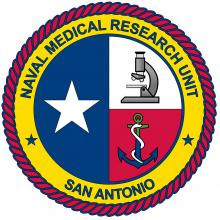Anti-bacterial effects of dental resin composite containing visible light activated nanoparticles
Placements of dental resins often result in recurrent caries (cavities) and have higher failure rates compared to amalgam. Newly developed dental materials that have excellent strength and durability, as well as anticariogenic activity should make resin composites a durable alternative to amalgam. Thus, the addition of visible light activated nanoparticles into novel resin formulations may improve the physical and antibacterial performance of dental resins. Navy researchers envision treating cavities with nanoparticle filled resin and issuing each military patient a toothbrush with a light emitting diode in the toothbrush head so the resin antibacterial process will be activated by the toothbrush.
Defective restorations with and without caries involvement were the third and fourth most common cause of dental emergencies occurring in Iraq and Afghanistan. Fractured teeth/restorations and defective restorations were documented as the reason for 31% of all dental emergency visits for Army personnel deployed to Iraq and Afghanistan.
Amalgam remains a widely used material for dental restorations. However, long term environmental and human health concerns related to mercury release from amalgam has accelerated the need for the development of novel dental restoration materials. Resin composites offer an attractive alternative to amalgam since their color can be adjusted to match natural teeth. Despite their aesthetic appeal, resin restorations often exhibit higher failure rates and increased incidences of recurrent caries formation compared with amalgam. Thus, newly developed dental materials should have excellent strength and durability, as well as anticariogenic activity.
Nanoparticles (NPs), particles less than 100 nm, often exhibit size dependent unique properties including increased surface reactivity, strength and durability. Semiconductor nanoparticles such as titanium dioxide (TiO2) generate reactive oxygen species (ROS) under ultra-violet (UV) irradiation. The formation of ROS can result in oxidative stress and be exploited as an antibacterial agent. However, UV light exposure causes DNA damage, potentially resulting in mutagenesis. Doping TiO2 with elements including nitrogen (N-TiO2) shifts the absorption spectra into the visible light range while maintaining photocatalytic ROS generation. Incorporation of N-TiO2 into dental resin formulations may lead to a new class of stronger, more durable dental restoration materials with anticariogenic properties.
This project seeks to test the antibacterial effectiveness of doped TiO2 NPs for use in dental resins. The research demonstrated that doped titanium dioxide nanoparticles exposed to blue light irradiation exhibited increased antibacterial activity compared to unexposed particles. The integrity of the particles was not affected, indicating they may be suitable for incorporation into dental resin.
This project has determined that doped TiO2 NPs may serve as suitable filler material in dental resins formulations and provide protection against caries formation.
NAMRU-SA researches will continue antibacterial effectiveness screening of doped TiO2 NPs against oral pathogens and identify other NP candidates for dental resin formulations. They will also continue optimization of NP ratios in dental resin formulations and characterize physical parameters of modified resins.
Future efforts will evaluate antibacterial activity of resins and optimize light conditions for maximum effectiveness.



